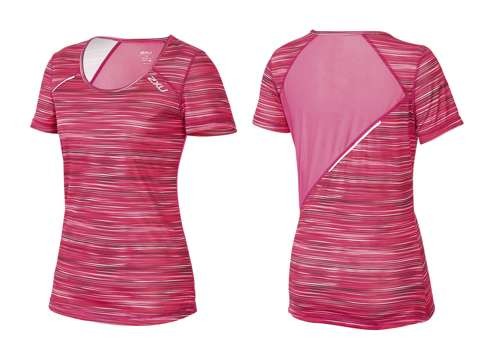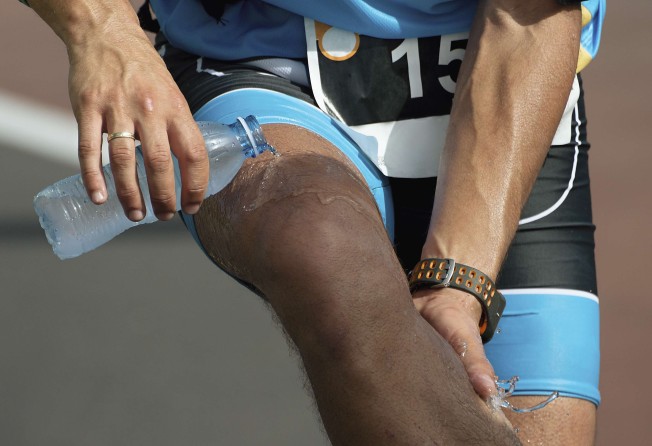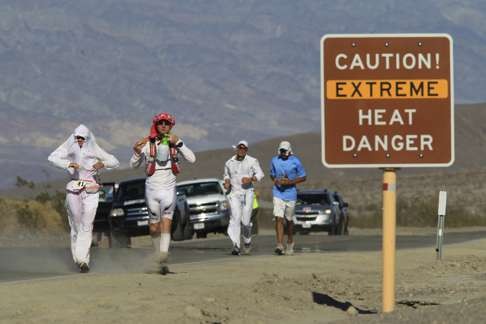
Tips and tricks to beat the Hong Kong heat while exercising
Keeping cool while keeping fit has always been a challenge in a climate like ours. Maybe special clothing can help, or fooling the body with ice – or maybe the best solution is the simplest: stay hydrated and just do less

Faced with an unusually hot July in which the monthly average temperature was 29.8 degrees Celsius – a full degree higher than the historical norm – I soaked my running visor in water and placed it in the freezer a couple of hours before I’d planned to head out for a run.
It was a failed attempt at trying to keep cool while working out in Hong Kong’s scorching summer. The visor was too “crunchy” to wear out of the freezer, and by the time it thawed enough to wear, it had lost any cooling power it might have stored.
On another day I trialled the 2XU ICE-X short-sleeve top (HK$540), a technical cooling garment recently launched in Hong Kong. In tests on elite athletes at the Australian Institute of Sport it has been shown to lower surface skin temperature by up to 2.5 degrees. The secret, according to 2XU, lies in xylitol (that sugar alcohol commonly used as a sweetener) embedded in the yarn of the fabric to draw heat from the body. Another technology called IR blocking is said to inhibit penetration of infrared rays, further aiding in cooling.

Unfortunately I did not experience the garment’s claimed cooling effects. I returned from my hour-long slog drenched in sweat and feeling just as hot and bothered as wearing any other running top.
I turned to top age-group triathlete and coach Olivier Baillet of Beyond the Line Coaching for advice. His secret? Ice, ice, baby.
“Personally I have given up thinking that my body can adapt further, after training and racing for eight years in Asia. I have tried all the garments on the market, but I still have problems cooling down. So, the only way I found to train hard in the heat is to ‘trick’ my body and mind with ice,” says Baillet.
“When I go for a long ride or a long run, I make sure I can have access to my bottle filled with ice water. I pour ice water on my face, in my hands, over my kidneys, and I drink some, as it is proven that all this provides a signal to the brain that the body temperature is down. In races, if ice is available, I make sure I keep ice in my cap, in my hands and over my kidneys.
“But these tricks are only when I want to make sure to be able to push really hard into the heat for a long time, which is not something I do every day. Instead, during the summer months, I often train indoors. I run at the gym, bike at home on the turbo trainer, and avoid the 35-degree outdoor pools altogether.”
Hyperthermia – or heat-related illness, such as heatstroke, heat exhaustion and heat cramps – is mainly caused by three things: high exercise intensity, high air temperature and high relative humidity, explains Alberto Dolci, a lecturer in exercise and environmental physiology and exercise immunology at the University of Westminster.
Hyperthermia affects physical performance in a few key ways, says Dolci. It reduces muscular endurance and it changes the way the body generates energy, from aerobic metabolism (which requires oxygen and burns carbs and fat) to anaerobic metabolism (which does not require oxygen, and mainly burns carbs).
It also causes the blood vessels in the skin to dilate, and blood to pool in the limbs. This reduces the volume of blood that returns to the heart, which in turn reduces the amount of oxygen-rich blood being pumped from the heart, and increases strain on the circulatory system. The result is increased fatigue, Dolci says.
At the Rio Olympics, where competitions are held amid Brazil’s average winter temperature of 30 degrees, some athletes “pre-cool” their bodies before events by wearing vests filled with ice packs, using cooling gloves or scarves, or even drinking ice slushies. These methods are said to lower one’s core temperature, extending the time it takes for core temperature to rise to dangerous levels.
Acclimation is also common practice, and there are several methods. American cyclist Kristin Armstrong, who has won at Rio her third Olympic time trial gold medal, is known to sweat through weekly Bikram hot yoga classes to help her acclimate.
In a study published in December 2015 in the Scandinavian Journal of Medicine & Science in Sports, men who immersed themselves in 40-degree water for 40 minutes after running on a treadmill (repeated every day for six days) showed improved endurance performance in the heat.

Local ultrarunner Andre Blumberg, who has completed the infamous 217km Badwater Ultramarathon in California’s Death Valley, where temperatures rise to more than 49 degrees, suggests using a sauna over several weeks.
I am just not sure acclimation actually works for everyone. In spite of spending most of my life in Singapore’s eternal summer, I still cannot take the heat.
Local trail runner and race organiser Keith Noyes is also still searching for a cooling solution. “After 24 years in Hong Kong, I’m still trying to find a tactic that works. On the positive side, this means training in the heat hasn’t killed me yet.”
Baillet says even his most performance-oriented and driven athletes succumb to high temperatures. “In the heat, they all slow down,” he says. “Recovery takes longer, as the body has to work more to adapt to the hot conditions.”
So, apart from wearing light clothing, staying well hydrated and running when the sun is down, perhaps the wisest and most effective solution is what my body already naturally does in the heat: shift down a gear. Or two.